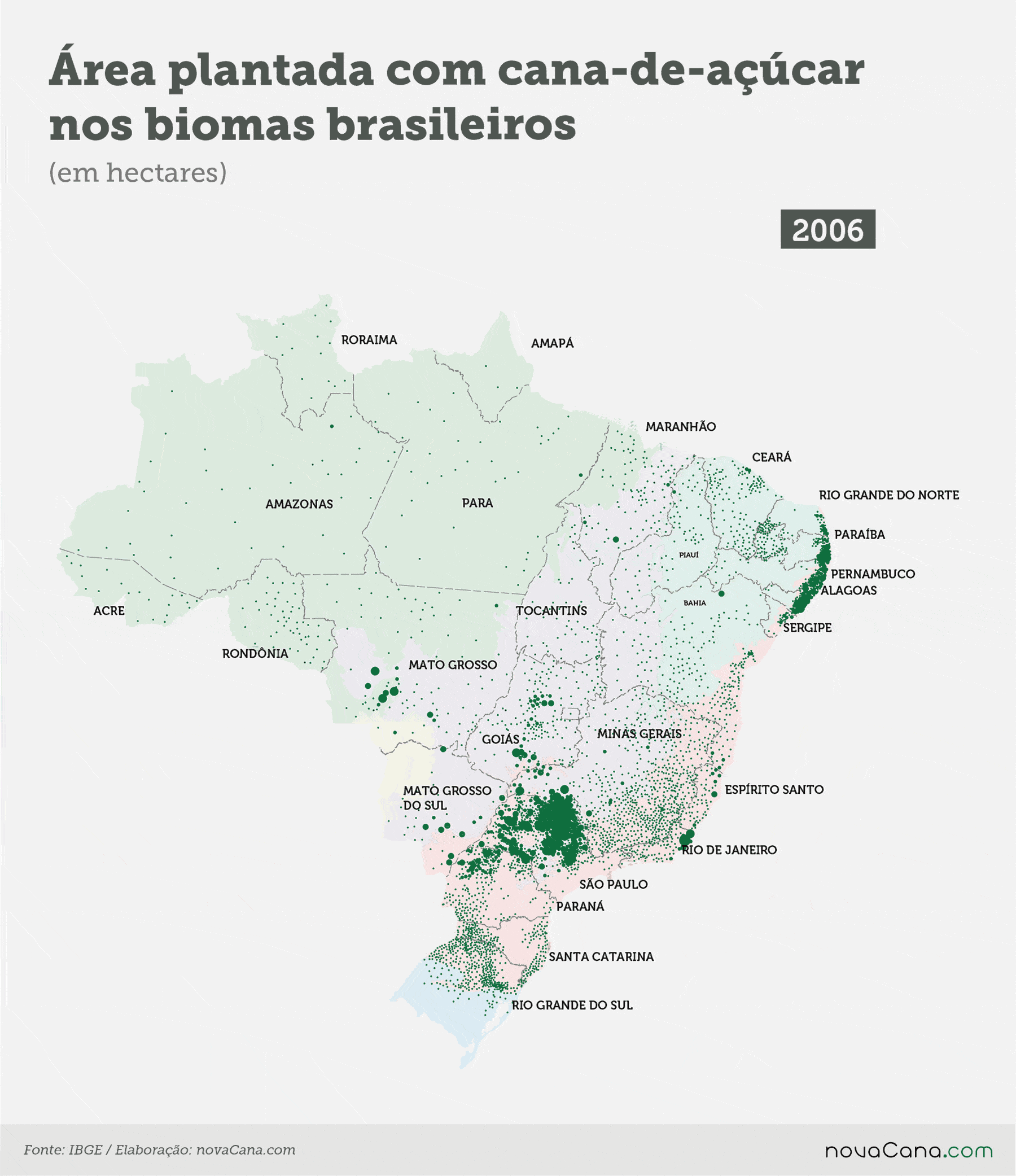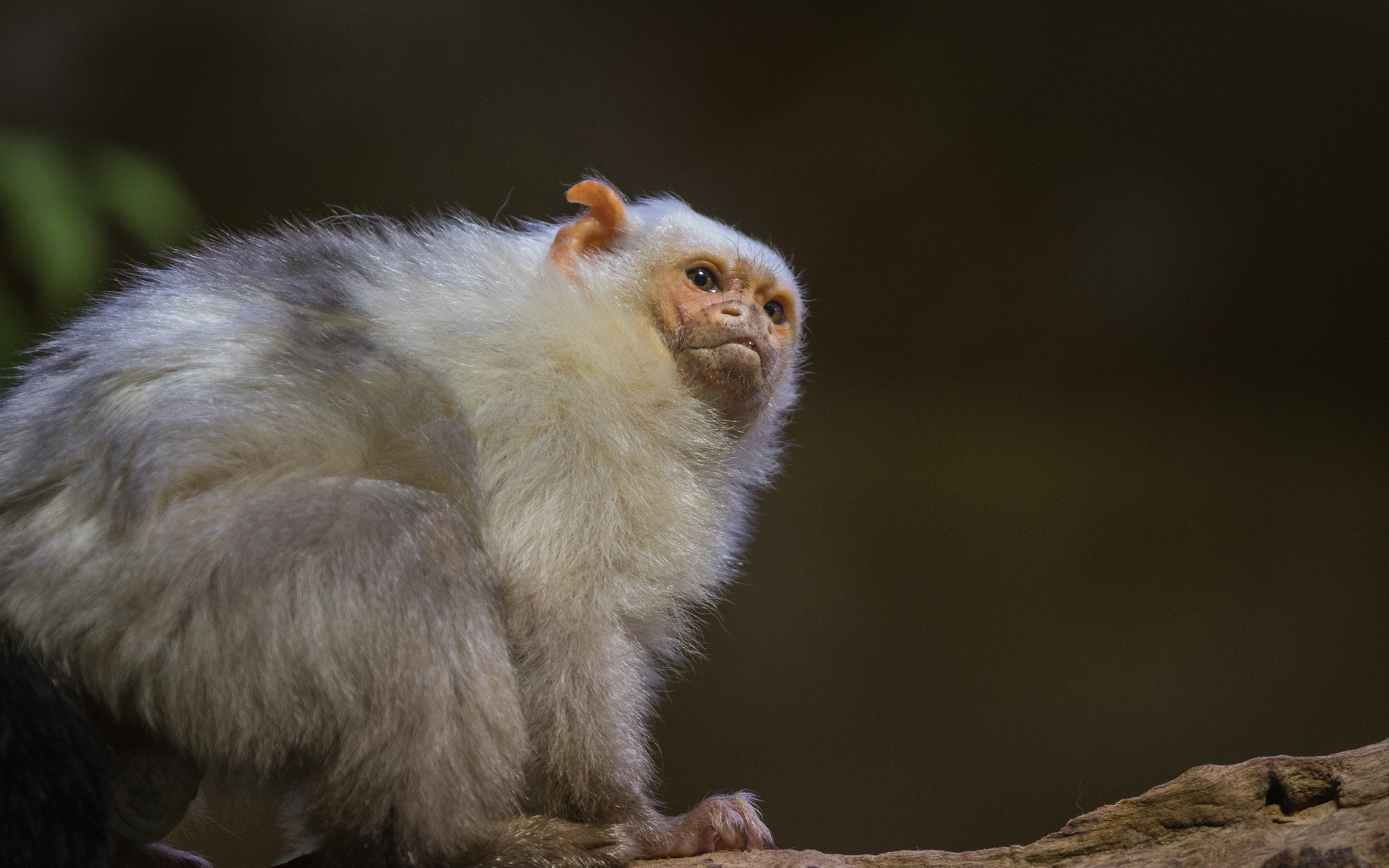- An area half the size of Switzerland in Brazil’s savanna-like Cerrado biome could see its biodiversity plummet as sugarcane farms expand to meet global demand for bioethanol, a new study says.
- Researchers calculated that some parts of the Cerrado could see up to 100% loss of mammalian species richness; endangered animals like the maned wolf will be the most affected.
- The Atlantic Forest and the Pantanal wetlands will also be affected, largely a result of growers of other crops moving into those areas as sugarcane farms take over their current areas.
- The study authors say there’s still a chance to mitigate those impacts by increasing agricultural productivity, protecting natural areas, and developing second-generation bioethanol made from a mix of sugarcane and eucalyptus.
Half of Switzerland: that’s the size of Brazil’s Cerrado biome that would see its biodiversity plummet if global demand for ethanol consumption grows as projected.
Up to 19,000 square kilometers (7,300 square miles) of this savanna-like ecosystem are expected to suffer a drastic reduction in mammalian species richness by the year 2030 due to changes in land use in the region, all to grow new sugarcane crops that are expected to be planted to meet rising demand for biofuels.
This is what scientists from universities in the Netherlands and Italy discovered when they developed a special model to calculate the environmental impact of expanding sugarcane farming in Brazil. They brought together previous scientific projections on the development of the crop in Brazil and crossed them with data and occurrence maps of mammals throughout the region, enabling them to exactly determine the size of the area where the main effects will be felt.
The calculations were based on changes in land use: if a type of vegetation is home to certain types of species, the introduction of sugarcane will change that scenario.
The researchers found that, aside from being the biome with the largest land area at risk, the Cerrado will most likely see significant losses in the number of mammal species in smaller regions. For example, in one 425-km2 (164-mi2) section, biodiversity could drop by up to 100%. Another area of 2.7 km2 (10.4 mi2) could see a loss of between 50% and 100%.
According to projections, endangered species like the maned wolf (Chrysocyon brachyurus), the giant anteater (Myrmecophaga tridactyla) and the South American tapir (Tapirus terrestris) face even greater danger: they could become extinct in some 7,000 km2 (2,700 mi2) of the biome, the study says.
“Because of globalization, the products we consume every day are increasingly produced overseas. Many agricultural products in Brazil are exported and as consumer nations, we are also responsible for the way resources like land and water are used in Brazil and for the environmental impacts of production,” says Anna Duden, a researcher at the University of Utrecht who led the study published in the specialized magazine Land.

Biome on alert
Brazil today already has more land dedicated to sugarcane farming than any other nation. Cultivation is especially intense in the southeastern Cerrado, but it recently began to expand to the northeast, where 40% of all land is occupied by agriculture. Only 2% of the Cerrado’s total area of 1.9 million km2 (733,500 mi2) is legally protected, the study authors say.
Sugarcane for biofuel is a bigger contributor to the Brazilian economy than even soybean. Sugarcane represents 30% of the total value of all Brazilian agricultural production, while soybean accounts for 29%, according to the study’s data. Corn is a distant third with a 4% share. With growing demand for bioethanol as an alternative energy to fossil fuels, sugarcane is expected to become even more important.
According to projections from the International Energy Agency, Brazil’s annual production of bioethanol from sugarcane is expected to jump from 33 billion liters (8.7 billion gallons) in 2019 to 54 billion liters (14 billion gallons) in 2030. To meet this figure will require at least 35,000 km2 (13,500 mi2) of farmland, most of it in the Cerrado and the Atlantic Forest, in part taking over other crops but also expanding into what today are natural fields and standing forest.
The indirect impact could also be greater: the scientists calculate that an area of between 20,000 and 78,000 km2 (7,700 to 30,000 mi2) is expected to undergo changes in land use as result of increased biofuel production, including areas in the Amazon and the Pantanal wetlands. This is expected to be a consequence of other crops being moved to new regions as their current areas are overtaken by sugarcane.
To measure the consequences of this change in land use on the diversity of Brazilian species, the scientists chose mammals for their study. There is sufficient data available on mammals to guarantee more precision in the analysis, and also because these animals are especially vulnerable to loss of habitat. “Brazil was identified as one of the top ten nations where mammals are projected to decline greatly by 2050,” the study says.
The scientists looked at the impact on 610 species of mammals, 107 of which are at risk of extinction and 93 of which are endemic to Brazil. Among these are the hoary fox (Lycalopex vetulus) and the silvery marmoset (Mico argentatus).
Aside from the Cerrado, the Atlantic Forest and Pantanal biomes are also expected to feel a negative impact on a large scale. The study calculated that 17,000 km2 (6,600 mi2) of the Atlantic Forest will lose biodiversity, as will 7,000 km2 of the Pantanal, or 5% of the entire biome.
The greater part of the impact estimated for the Pantanal in the study isn’t directly related to planting of new sugarcane crops but rather from activities displaced from the Cerrado and Atlantic Forest by sugarcane farming.
“I think the most important finding in our study is showing the importance of including indirect impact on the growth of sugarcane farming due to ethanol production,” Duden says. “These were more varied and greater in some areas.” She adds that most of the loss of biodiversity in the Cerrado could be due to the relocation of other crops because of increased sugarcane farming.

A guide for public policy
While Duden’s study is not the first to measure the impacts of increased sugarcane farming on ecosystems, it’s more thorough on points that previous studies didn’t address, offering a large-scale spatial analysis that until now was not possible “in large part because of the nature of biodiversity, which is hard to quantify in large areas,” she says.
Duden and her colleagues say they hope their findings can inform environmental development and conservation policy. “If we define clear and measurable limits for the impacts on biodiversity, the model’s results will be able to help in making more informed decisions,” she says.
A key point, and one that Duden plans to study next with researchers from São Carlos Federal University in the state of São Paulo, is that there are methods for mitigating the negative effects of expanding areas of sugarcane farming. “My colleagues at the Copernicus Institute of Sustainable Development created strategies like increasing agricultural productivity, protection of natural areas and a scenario of change for second-generation ethanol (made from sugarcane and eucalyptus). These strategies avoided 96% of lost natural vegetation in comparison with scenarios where these measures were not taken,” Duden says.
“I wanted to evaluate the environmental impacts of increased bioenergy production so we could see what the potential effects of an energy transition would be. However, what our results suggest is that, in establishing sustainability guidelines for a sector, in this case bioenergy, the impact can be reduced.”

Citation:
Duden, A. S., Verweij, P. A., Faaij, A. P. C., Baisero, D., Rondinini, C., & Van der Hilst, F. (2020). Biodiversity impacts of increased ethanol production in Brazil. Land, 9(1), 12. doi:10.3390/land9010012
This story was first reported by Mongabay’s Brazil team and published here on our Brazil site on Mar. 30, 2019.
